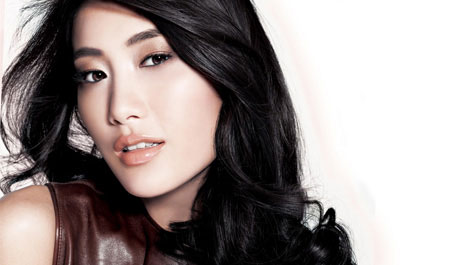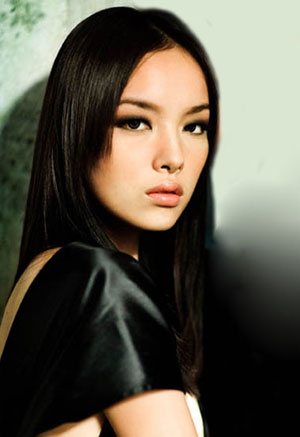The newest Asian face to appear on advertisements for western luxury brands is a Taiwanese Canadian male actor named Godfrey Gao for Louis Vuitton, the flagship brand for European fashion giant LVMH.
For the moment the use of an Asian male to represent a leading global luxury brand is rare enough to have earned Gao the title of the first Asian male supermodel. The fame he achieved in Taiwanese TV dramas is deemed insignificant to the exposure he is getting as one of the faces in Louis Vuitton’s spring/summer 2011 men’s advertising campaign.
The selection of Gao, 26, no doubt has something to do with his clean jawline and shapely eyebrows, but the casting of an Asian male to embody luxury, style and fantasy is probably more the product of several recent economic developments that impact the bottom line at the world’s leading luxury brand.

Chinese model Shu Pei Qin debuted as one of the three faces of Maybelline in the fall of 2010.
The most important is China’s surge as a luxury market. China consumes 27.5 percent of the world’s luxury goods and is the biggest market for the French prestige brand Louis Vuitton. It is already second behind Japan and ahead of the U.S. It’s 25% annual growth has poised it to overtake Japan by as early as 2014. Other top-10 luxury markets include S. Korea, India, Germany, Russia, Indonesia, Britain and Taiwan. The importance of the U.S. and other western nations have been declining in absolute as well as relative terms due to the recession and its lingering impact on consumer psychology.
A surprising sidelight to this trend is the fact that, at least in China, men actually outspent women on luxury goods last year. No doubt they accounted for much of the 26% jump LVMH enjoyed during the first nine months of 2010.
A second development is the aggressive steps China has taken to change its image as a hotbed of product piracy. A favorite target of piracy like Louis Vuitton would have been reluctant — until China’s recent tough anti-piracy measures — to remind consumers that perhaps even the majority of the famous “LV” logos seen on the streets were pirated replicas.
In the image-centric business of hawking luxury products, the most important force behind the willingness to put an Asian male face into the mix is the big image shift for Chinese and Asians in general. Until recently Asia has been linked with low wages, assembly lines and congested streets. They don’t add up to the fantasy of over-the-top opulence and leisure with which a brand like Louis Vuitton has been long associated. But recent years has seen a mushrooming of stories about China’s billionaires as well as the intimate link between Asian faces and a sleek new tech-based aesthetic of which Asians are seen as key players. It’s no coincidence that the first product Gao is seen embracing is a man bag likely to be used to carry tablet computers.
And of course Gao’s ascendance into the top ranks of modeling trails the high-profile signing of Chinese female models to front for leading western brands. Last spring Chinese model Liu Wen became the first Asian face of Estée Lauder. A few months later Maybelline followed suit by picking another Chinese model and Liu buddy Shu Pei as one of three faces to star in its global cosmetics campaign. The trend was highlighted at the New York Fashion week this February by the sudden proliferation of Asian models Fei Fei Shun, Ming Xi, Tao Okamoto and Wang Xiao, as well as Liu Wen, strutting the catwalks for major European and American brands.



